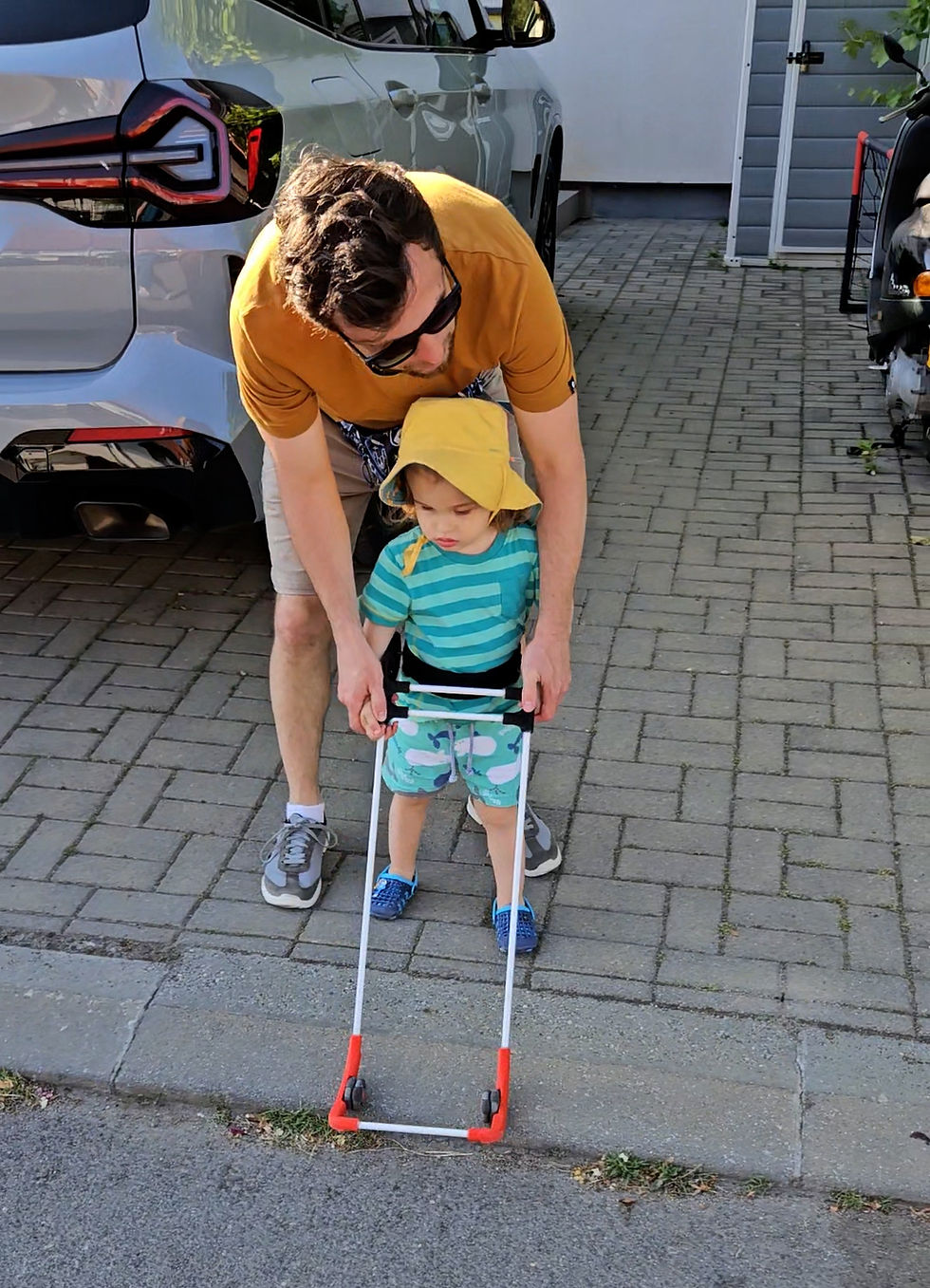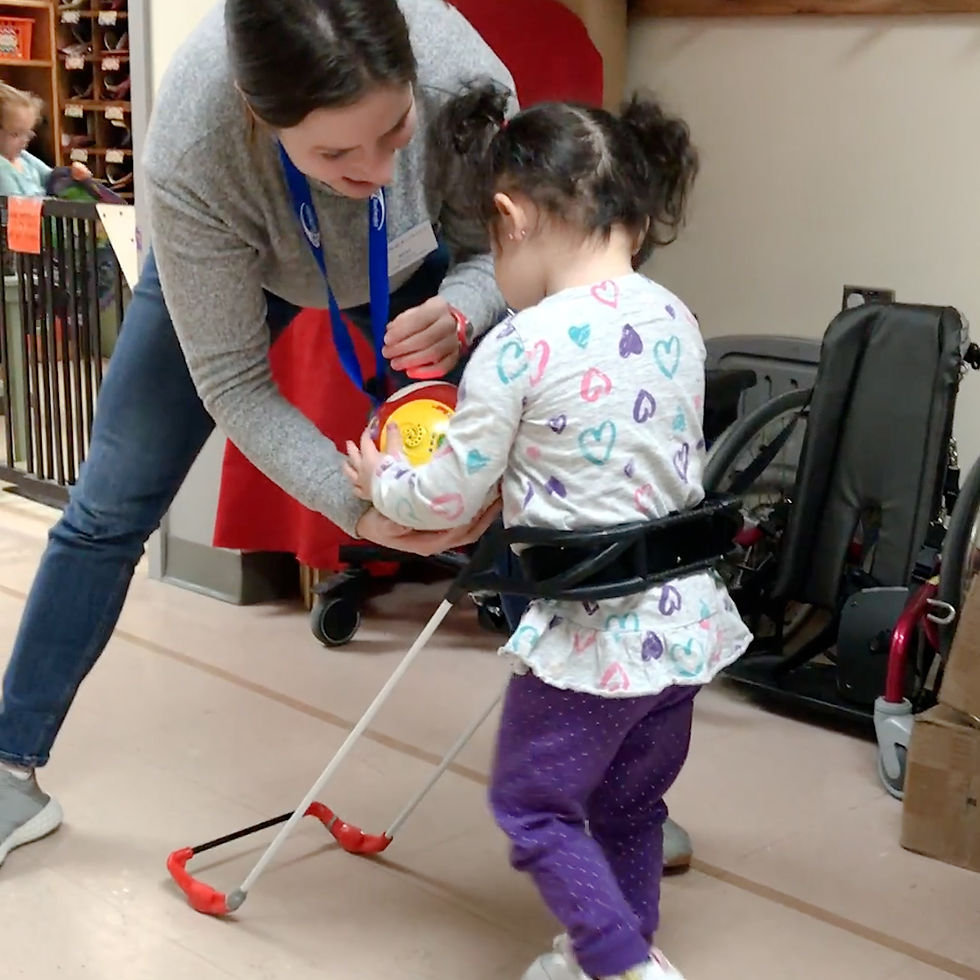Empowering Pediatric Mobility with Belt Canes
- Grace Ambrose-Zaken

- Jul 14
- 4 min read
Updated: Jul 22
As parents and caregivers, we strive to provide children with the support they need for mobility and independence. One innovative tool that has emerged to address mobility challenges is the Pediatric Belt Cane. This assistive device empowers children, helping them gain confidence and navigate their environment with ease.
Understanding Pediatric Belt Cane Solutions
Many children with a mobility visual impairment or blindness (MVI/B) face challenges with mobility due to various health conditions, injuries, or developmental disabilities. These challenges can affect not only their physical movement but also their self-esteem and the ability to engage in daily activities. The Pediatric Belt Cane is designed specifically to address these needs.
Unlike traditional canes, the Pediatric Belt Cane is secure and sturdy while being lightweight and easy to use. It provides the stability that children with an MVI/B require without being overly cumbersome. This design encourages children to be active. They are more likely to participate in activities when they feel safe and secure.

Features of Pediatric Belt Canes
Pediatric Belt Canes boast several features that make them suitable for children. Key characteristics of these devices include:
Custom Fit: As children grow, their mobility needs change. Pediatric Belt Canes are built to suit the child's height and waist, allowing them to begin their transition to independence seamlessly at any stage of development.
Stability and Support: The cane’s design includes omni wheels and a wide base for additional support points, maximizing stability. This is crucial for preventing falls and promoting safe movement.
Lightweight Materials: Constructed from lightweight materials, these canes are easy to carry and maneuver. Children can use them without feeling burdened.
Classic Colors and Designs: The aesthetics of Pediatric Belt Canes are the white, red, and black of the white cane. This allows the public to see the belt cane as a natural accessory for a blind child rather than a medical device.
Each of these features contributes to enhancing a child's mobility and confidence in their ability to explore and engage with their surroundings.

What is a Belt Cane?
The belt cane is a specialized mobility device tailored for children with an MVI/B to assist in walking or moving safely. It typically consists of a sturdy frame and is worn around the waist. The cane extends down to facilitate balance and support during movement.
The primary purpose of a belt cane is to give children with an MVI/B greater independence as they navigate various environments, whether at home or outdoors. Ensuring children with an MVI/B feel secure while maintaining their mobility is at the core of why belt canes are so valuable.
The Impact of Pediatric Belt Canes on Child Development
The influence of Pediatric Belt Canes extends far beyond physical movement. They can significantly impact a child’s emotional and social development. Here’s how:
Boosting Confidence: When children can walk or move with confidence, it fosters a sense of autonomy. The mental shift from dependence to independence can be profound.
Encouraging Social Interaction: Children are more likely to engage with peers when they feel secure and capable. A Pediatric Belt Cane allows them to participate in games, sports, and other social gatherings without fear.
Promoting Physical Health: Physical activity is essential for overall health. With the added support of a Pediatric Belt Cane, children can engage in more physical activities, enhancing muscle strength and coordination.
Statistics show that children using mobility aids generally show an improvement in both emotional and physical well-being. According to a study presented by the American Academy of Pediatrics, children who use assistive devices tend to report higher levels of satisfaction with their mobility and more positive social interactions.

Practical Considerations When Choosing a Pediatric Belt Cane
When selecting a Pediatric Belt Cane for a child, several factors should be considered:
Visual Impairment: Check the child has a mobility visual impairment or blindness and unable to rely solely on vision to avoid hazards.
Self-limited Independence: The child with an MVI/B is able to move independently, yet appears to prefer to ride or walk holding hands.
Inconsistent Handheld Tool Use: The cane must be easy to operate and used most of the day. Children need constant protection without difficulty.
Size and Fit: Ensure the cane is the right size for your child. An ill-fitting cane could lead to discomfort and might not provide the support needed.
Consult with Professionals: Always consult healthcare professionals, such as physical therapists or pediatricians, to get recommendations based on your child's specific mobility needs.
By taking these factors into consideration, you can choose the right Pediatric Belt Cane that empowers your child and fosters their independence.
Success Stories: Real Lives Transformed by Pediatric Belt Canes
Several stories showcase how Pediatric Belt Canes have changed lives. Families have reported remarkable transformations in their children’s lives:
Nathaniel's Journey: Nathaniel, a four-year-old diagnosed with blindness and on the Autism Spectrum, struggled with independent walking throughout his early years. After 3 months of using a Pediatric Belt Cane, his parents noticed a significant improvement in his willingness to walk. He was much faster and fully independent walking to the swings.
Marcu's Independence: One-year-old Marcu, who was born blind, was hesitant to play outdoors. His family introduced him to a Pediatric Belt Cane, and it opened up a world of exploration for him. He now loves playing with friends in the park, something he previously felt too insecure to do.
These success stories underscore the potential of belt canes. They not only provide physical support but also foster emotional growth, allowing children to thrive in various environments.
Final Thoughts on Pediatric Mobility
Empowering children with mobility challenges is crucial for their development and overall happiness. Pediatric Belt Canes stand as a beacon of support, offering children with an MVI/B independence while enabling them to engage meaningfully with their world. If you're interested in exploring options, you can find more information on this belt cane.
By incorporating movement tools like the Pediatric Belt Canes into daily routines, we are investing in our children's futures, helping them explore their potential one step at a time. Following these guidelines, parents and caregivers can ensure their children with an MVI/B have the tools they need for both mobility and confidence.








Comments